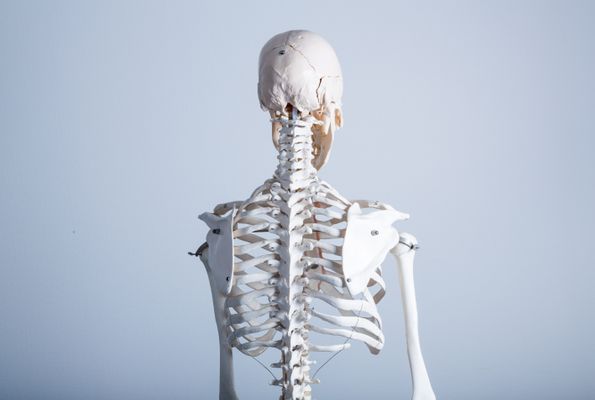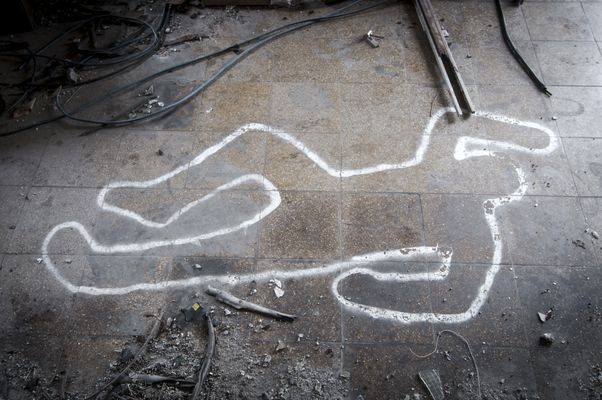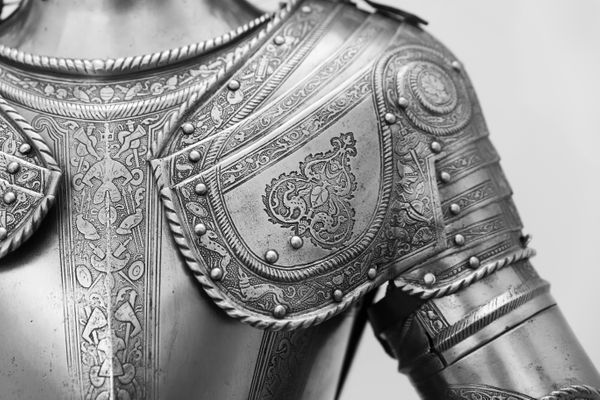6.2.1
Violence
Heroic Violence
Heroic Violence
Macbeth is shown to be a hero at the start because of his violent nature. He kills a traitor. Ironically, Macbeth ends up becoming the traitor that is murdered at the end of the play.


'Unseam’d'
'Unseam’d'
- The violent verb ‘unseam’d’ emphasises how Macbeth opens his enemy from his navel (belly button) to his face.
- It all seems very fluid (free) in motion. This implies Macbeth is very strong and is unphased by horrifically killing another man.


‘The usurper’s cursed head’
‘The usurper’s cursed head’
- At the end of the play, Macduff removes Macbeth’s head.
- Macduff seems to be displaying it: ‘Behold where stands / the usurper’s cursed head’ (5,9).
- This moment makes Macbeth’s heroism at the start ironic – he was a hero for killing a man who seems to have been a traitor to the king. However, almost immediately after that, he becomes a traitor, murdering the king and taking over Scotland.
- This relates back to the witches’ statement: 'Fair is foul, and foul is fair' (1,1).
Lady Macbeth - Violent Imagery
Lady Macbeth - Violent Imagery
Lady Macbeth uses very violent imagery to persuade her husband to murder King Duncan. She tells him she would have bashed in the brain of her own baby if she had promised to do it.


Quotation from Lady Macbeth
Quotation from Lady Macbeth
- ‘I would, while it was smiling in my face, / Have plucked the nipple from his boneless gums, / And dashed the brains out, had I so sworn / As you have done to this’ (1,7).


'Plucked'
'Plucked'
- The verb ‘plucked’ is simple but devastating; it’s as if she casually removed the baby from the breast and broke the connection between them.
- In this sense, Lady Macbeth goes against nature by refusing to nurture her own child and, instead, describes the violent image of her murdering it.


'Boneless'
'Boneless'
- The adjective ‘boneless’ reflects how young the child is.
- He doesn’t have teeth in his gums yet. This reminds the audience of how vulnerable the baby is and how Lady Macbeth does not seem to care – again, her careless attitude goes against nature, especially for women at the time the play was set.


'Dashed'
'Dashed'
- Finally, the verb ‘dashed’ is a very aggressive one. It shows how she would have bashed in her baby’s head if she had promised to do it.


Analysis
Analysis
- She uses violence to try and show Macbeth how strong her commitment is to anything she promises to do.
- She is trying to show him he is a coward for going back on the plan.
- She uses an image of violence against the thing she cares most about – her baby. She does this to show him that she’d do anything to keep her word to him and to make him change his mind.
- In Lady Macbeth’s mind, this violent description shows her husband the extent she’d go to for him and, therefore, how much she loves him.
Murder and Violence
Murder and Violence
Violence leads to more violence in Macbeth. Macbeth murders the king and murders to protect his crown thereafter. He even orders for a child to be murdered.


‘A sorry sight’
‘A sorry sight’
- The violence of killing King Duncan is clear from the blood on Macbeth’s hands.
- King Duncan was sleeping. Macbeth was especially cowardly in the murder and he prevented him from a warrior’s death.
- Macbeth refers to his hands as ‘a sorry sight’ (2,2). This suggests that he has done something incredibly weak in murdering a sleeping man, and one who he was honour-bound (morally obliged) to serve and protect.


'Blood will have blood’
'Blood will have blood’
- Macbeth says after seeing Banquo’s ghost, ‘It will have blood they say: blood will have blood’ (3,4).
- This is a metaphor saying that once a violent act is committed, more violence will follow. This usually happens when a family tries to avenge (get revenge for) the first murder.


‘He has killed me, mother’
‘He has killed me, mother’
- The murder of Macduff’s son is seen on stage: ‘he has killed me, mother’ (4,2).
- The murder of children is very violent and upsetting. Children are symbolic of innocence. They cannot protect themselves.
- Calling out to his ‘mother’ is very emotive (brings out feelings), because it reminds those watching of how young he is. This violence reflects how evil Macbeth has become.


'Savagely slaughtered'
'Savagely slaughtered'
- 'Your castle is surprised; your wife and babes / Savagely slaughtered' (4,3)
- Ross tells Macduff that his wife and children are dead.
- For Macduff, this has now become a mission of personal revenge against Macbeth.
- Linking back to fate and tragedy, Macbeth may have caused his own death at this point – the murder of Lady Macduff and her son means that Macduff only wants revenge now.
1Literary & Cultural Context
2Plot Summary
3Characters
3.1Macbeth
3.2Lady Macbeth
3.3Other Characters
3.4Grade 9 - Key Characters
4Themes
4.1Themes
4.2Grade 9 - Themes
5Writer's Techniques
5.1Structure, Meter & Other Literary Techniques
6Recap: Main Quotes
6.1Characters Quotes
Jump to other topics
1Literary & Cultural Context
2Plot Summary
3Characters
3.1Macbeth
3.2Lady Macbeth
3.3Other Characters
3.4Grade 9 - Key Characters
4Themes
4.1Themes
4.2Grade 9 - Themes
5Writer's Techniques
5.1Structure, Meter & Other Literary Techniques
6Recap: Main Quotes
6.1Characters Quotes
Unlock your full potential with Seneca Premium
Unlimited access to 10,000+ open-ended exam questions
Mini-mock exams based on your study history
Unlock 800+ premium courses & e-books
